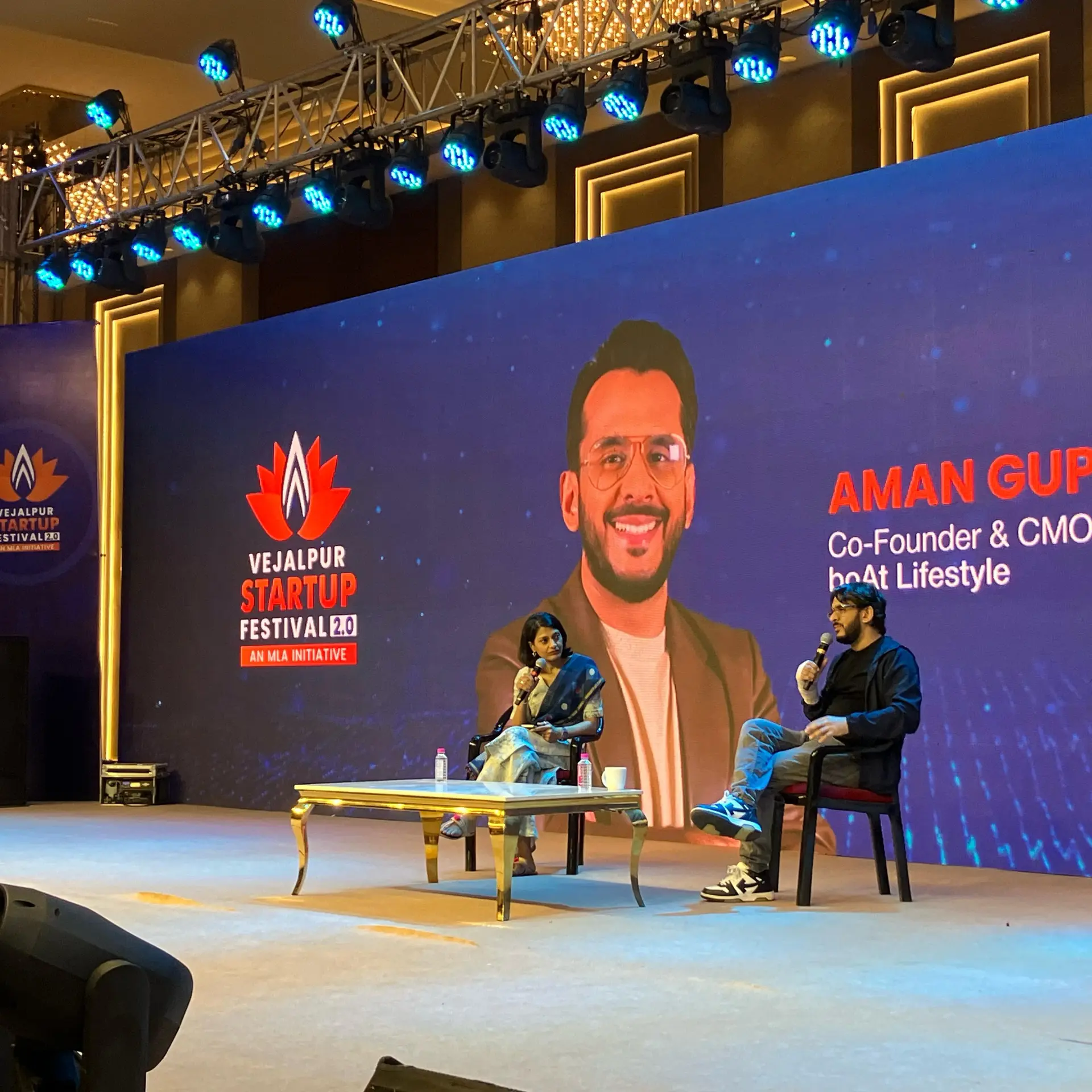[TechSparks 2020] Branding vs blanding: Mohit Jayal, of Motherland, on strategies for building enduring brands
Mohit Jayal, Co-founder, Motherland Joint Ventures, delivered a design and branding masterclass on Day Two of TechSparks 2020, exhorting businesses to leverage the triad of purpose, culture, and experience design for an effective brand strategy.
If you’ve ever ordered a ‘nut case’ on India’s ‘6E’est airline, had a head-turn moment at a Royal Enfield showroom, or used #IncredibleIndia to tag a holiday pic, you’re possibly familiar with the brands that Mohit Jayal helped create.
In 2016, Mohit left W+K, the advertising agency best known for its work for Nike, to start Motherland Joint Ventures with a set of partners, including Rahul Bhatia of IndiGo.
Motherland bills itself as a vibrant design and non-traditional marketing partner for brands. They’ve been making headlines recently, especially for their quirky projects such as JDH, The mission: to work with like-minded enterprises, organisations and individuals in the pursuit of not only profit, but progress too.
Motherland’s first initiative, the JDH Urban Regeneration Project, exemplified this mission. It is a heritage real estate venture that is restoring the Walled City of Jodhpur to its former glory through a mix of restoration, technology, retail, and hospitality.
Motherland has also created their own co-branded quality amenity kits at low unit prices for OYO.
“Blanding isn’t just a cosmetic problem regarding logos and messaging. It’s a symptom of mediocre brand strategy – and that leads to deeper issues that can destroy even the strongest of business models,” Mohit said, talking about the hidden dangers of following popular branding trends without perspective or a strategy in place.
He was taking a masterclass titled Branding vs Blanding: A conversation about the thin line between meaningless and meaningful brand strategy at TechSparks 2020, YourStory’s flagship conference. .

“Blanding isn’t a B2C-specific issue. It applies to any business that needs to differentiate itself, whether it’s B2C, B2B – or just B,” he adds, as he recounted how, for most new ventures, ‘brand stuff’ was an afterthought or frill, and instead needed to be in the business blueprint, because it was fundamental.
“Brand strategy IS business strategy because it involves purpose, company culture, brand behaviour, and experience design. Brand strategy IS NOT marketing strategy ticking off the cliched boxes of visual identity, tone of voice, and communications as it is popularly done,” he says.
Contextualising the brand strategies of enduring brands, Mohit said, “Although purpose, behaviour, culture and experience design sound like marketing fads or jargon, when deployed correctly they have created some of the most valuable, exciting, and enduring brands in the world.

“Even though this approach to brand strategy has been around for decades, very few companies have actually put it into practice. And even fewer have got it right,” he adds.
Mohit advises leveraging the triad of purpose, culture/behaviour, and experience design for an effective brand strategy.
“It’s the combination that makes the approach powerful. Purpose alone can become preachy or dull. Experience design alone can be shallow and vulnerable to shocks. But together, they create a solid alloy for brands,” he adds.
To sum up, Mohit recommended that brands seamlessly flow from purpose, culture, behaviour to experience design. He recommends using this method to create products and services that are ‘trendier, cleverer, more efficient, more responsible and more accessible’.
“These brands earn love because of their operating philosophies – turning their customers into collaborators with a sense of ownership and control. And soon, they evolve from transaction-based entities into valued social infrastructure or part of pop culture, depending on the category. It’s a perfect model – but – with popular support comes public accountability, So there’s no space for fakes,” Mohit says.
Edited by Teja Lele


![[TechSparks 2020] Branding vs blanding: Mohit Jayal, of Motherland, on strategies for building enduring brands](https://images.yourstory.com/cs/2/9456dfb02d6c11e9aa979329348d4c3e/Imagemqxs-1604036707422.jpg?mode=crop&crop=faces&ar=2%3A1&format=auto&w=1920&q=75)




